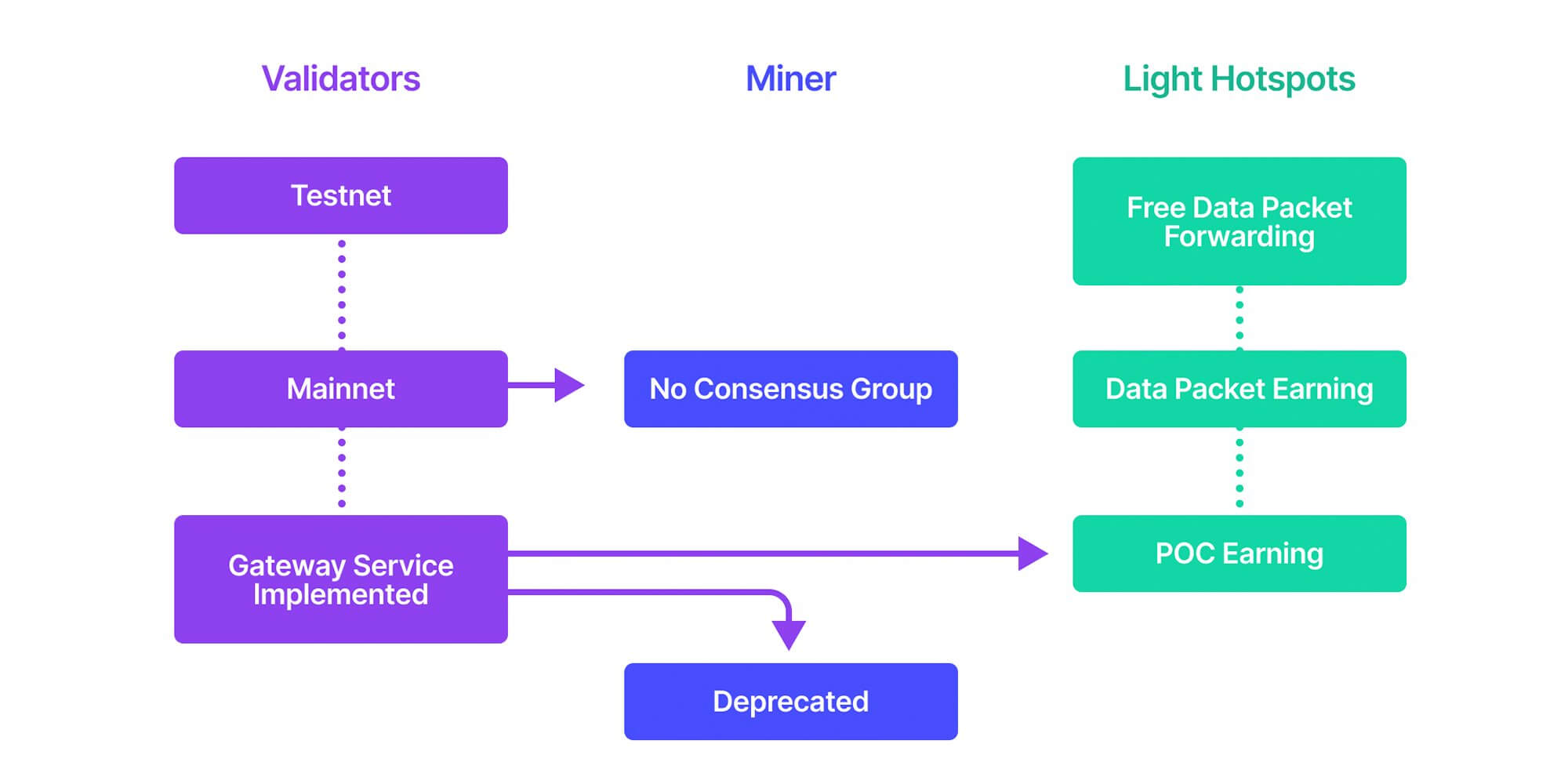Starting from March 11st, 2022, we’ve been witnessing the exciting activation of Light Hotspots and it surely symbolizes a great milestone for the Helium network.
The exact release date of Light Hotspots still depends on the official announcement of Helium, but people would be keen to know what is a Light Hotspot and what it means to be upgraded to it. As a result, we provide the answers to you right here.
What is a Light Hotspot?
Light Hotspot is an evolution of the way that LoRaWAN gateways interact with the Helium blockchain. The Helium blockchain has been functioning entirely on the physical hotspot itself since the genesis block, which means each hotspot undertakes the job to store the up-to-date copy of the blockchain. As blockchain networks evolve, each hotspot running a full node will be subjected to an increasing load and will begin to lose synchronization due to higher computational requirements.
To alleviate this, since July 8, 2021, consensus work for hotspots has shifted from physical hotspots to Validators. This simplifies the architecture and allows the Helium network to grow exponentially while keeping block times and periods stable.
Meanwhile, as all approved hotspots transition to a lightweight Hotspot architecture, a new type of hotspot, called Data Only Hotspots came out and was activated from April 20, 2021, to meet growing demand and continue to expand network coverage. Meet our SenseCAP M2 Data Only Hotspot.
What are the advantages of Light Hotspots?
- Still allow PoC HNT revenue and transmit data to the Helium network, while being free of storing the copy of the blockchain, issuing challenges, and participating in consensus groups.
- Accelerate setup process. Light Hotspots no longer need to be synced to the blockchain, they only need to be registered to the Helium network.
- Improve efficiency in network expansion, and are more capable of stabilizing the Helium network. Fewer modules and components in hotspots, lower threshold for producing, and easier to maintain devices.
What’s the difference between Full Hotspot and Light Hotspot?
In general, a full hotspot creates challenges, beacons, witnesses other hotspots, and stores a copy of the blockchain, basically covering the whole PoC cycle.
Due to the invention of the “validators”, hotspots are free of the work of creating challenges and storing the copies of blockchain since validators merely focus on validating all receipts for challenges, beacons, and witnesses from hotspots. With those receipts validators form a block and add it to the blockchain. As a result, the light hotspot would only be responsible for beaconing and witnessing while earning $HNT during the process.
Light Hotspot Properties
When the Light Hotspot Client is fully developed and put into production (which will occur after Milestone 4, detailed below), they are going to satisfy the following properties:
- A hotspot on the Helium network that can participate in PoC beacons and witnesses and forward packets through Validators;
- Does not store copies of the blockchain, eliminating synchronization;
- Does not create challenges (rely on Validators to create challenges on their behalf);
- Does not participate in Consensus Groups (rely on Validators for block production);
- Will no longer rely on libp2p or “gossip”, but will use gRPC, a new framework to communicate between distributed systems;
- Will be eligible to earn $HNT
In other words, the Client will allow hotspots to participate as full hotspots without the additional overhead of maintaining a local copy of the blockchain.
How does the architecture of a Light Hotspot work?
You might understand the architecture of the Light Hotspot through the diagram here.

What does it mean to you?
First of all, the current generation of hotspots (like SenseCAP M1) will work just fine. As the Light Hotspot project proceeds from beta through to milestone 4, certain features will be disabled. Most notably, all consensus activities will shift to the validator manner.
Hotspots will become “light hotspots” via software updates rolled out by the hotspot manufacturer (like us) over the Internet. The change to a light hotspot would dispel the concern of relaying and syncing, as well as the SD card issues. The only thing that needs to be concerned is the connection between hotspots and the Internet.
Moreover, since hotspots will use far fewer resources, in time cheaper hotspots will be produced and appear on the market. This may result in lower-cost hotspots down the road, but there’s still some time before it happens.
Keep track of the latest news and all information about SenseCAP MX Helium Hotspot: https://www.sensecapmx.com

